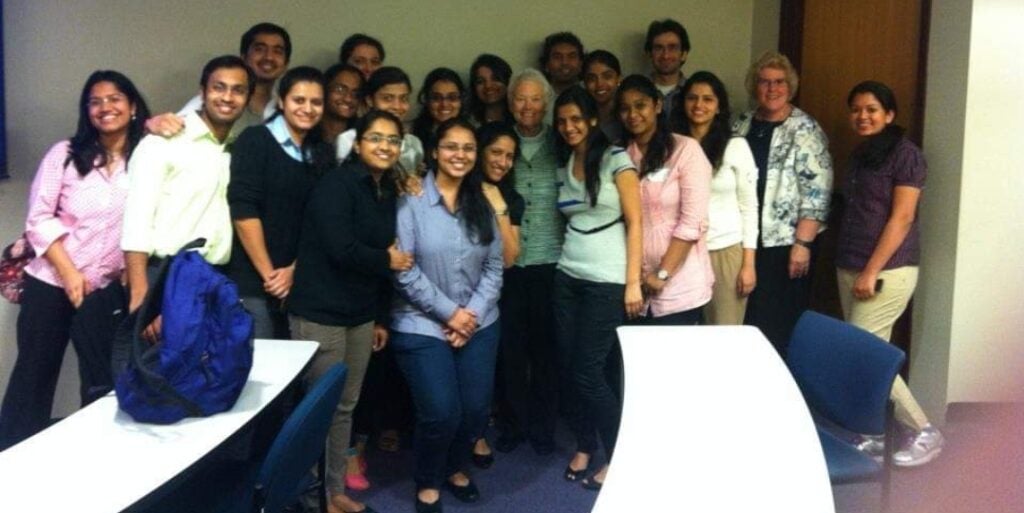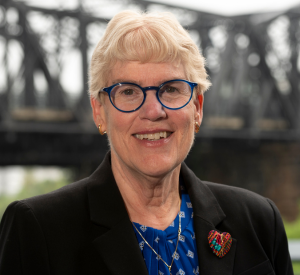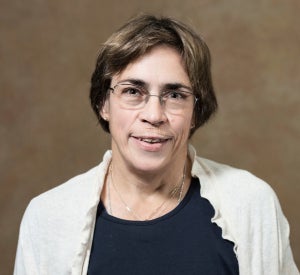“Anybody who is different is looked at and stared at. That happens around the globe,” observes Sue Whitney when asked how society views children with cerebral palsy (CP).
As co-director and professor of the Master of Science in Physical Therapy (MSPT) program at the University of Pittsburgh School of Health and Rehabilitation Sciences (SHRS), Whitney has decades of experience teaching students and working with adults and children who have neuromuscular movement disorders. For children, a life of independence and prosperity could easily be disregarded by society. Their ungainly stance and inability to control subtle motor skills, like hand movements, elicit stares and often relegate them to a life of constant caregiving by family and special education classes in school. “It’s really hard for parents,” Whitney continues. “I think it’s especially hard because these kids grow older and become adults, and I think people are nicer to children than they are to adults. We need to train children to be productive members of society so that they can be employed.”
Some dedicated pediatric physical therapists, however, see past society’s preconceptions. They know that behind these bright, wondering eyes is a mind fully capable not only of love and friendship, but of critical thought and problem solving that could contribute to the world around them if just given the chance. SHRS alumni are proving themselves as leading practitioners of evidence-based research that aims to set up each child with as independent a life as possible. Forged at SHRS, their commitment is cemented in a belief that each child with a neurodevelopment disability has the potential to live life to the fullest with dignity and free of barriers.
This dedication is at the essence of the SHRS MSPT program. Whitney explains, “You have to get children living with cerebral palsy prepared for life and that’s what we really try to emphasize. It’s not whether their arm can loosen up a little. It’s more ‘how can they use what they have’ so this person can go out and earn money, or so they can interact with other people and contribute to society. That’s a feeling of self-worth that’s really essential.”

A Successful, Bold Move to Pittsburgh
Kern Dacosta (MS ‘11), alumna of the Neuromuscular Physical Therapy major in the MSPT program, began her life’s work as a physical therapist for children with cerebral palsy in Mumbai, India, at an esteemed clinic called ADAPT (Able Disabled All People Together). There she saw firsthand how children with disabilities could thrive when brought into a nurturing, multidisciplinary environment that guided them through sessions of physical therapy, occupational therapy, speech therapy and job training. The holistic model also provided support for the parents and gave them the confidence that their child could succeed and have a life of increased independence.

Dacosta worked with the children at ADAPT for two years and knew she could assist them further if she had more training in the neuroscience behind their disorders. “I feel it’s very important to always be learning to benefit a patient regardless of one’s age or field,” she says.
Cerebral palsy is caused by damage to the brain during its crucial period of development early in a child’s life or in the womb. There can be a loss of oxygen, head trauma, infection or other causes that result in a loss of muscle control that varies in type and severity depending on the area of the brain that has been affected. Understanding the brain’s functions at the neuromuscular level would give Dacosta insight into each patient’s unique type of cerebral palsy, a greater breadth of knowledge in what therapies could improve a child’s condition and the aptitude to talk to physicians more intelligently.
She had always dreamed of studying in the United States and researched the top schools in Physical Therapy and came upon Pitt’s #1 ranking. The post-professional, Master’s degree in Physical Therapy was designed with a focused curriculum in a one-year program, which made the decision even more attractive, and she quickly sought admission. When she shared the good news of her acceptance, the children and parents that she worked with fully supported her bold move to Pittsburgh. She recalls, “A parent once told me, ‘Even without a Master’s degree, you are treating my child so well. I can only thank God for all the children you will treat after completing this program.’”

At Pitt SHRS, Dacosta thrived working among the neurology faculty. “I am highly grateful for the quality of training given by the MSPT Neurology faculty. Every professor is an expert in their field and getting to know the experts who wrote the books that I studied during my Bachelor of physiotherapy coursework was a star struck moment for me.” She credits Susan Whitney, George Carvell, Dave Wert, Mike Timko, and Jessie VanSwearingen as teachers who quickly became supportive mentors not only in her studies, but in making her feel at home on the other side of the world.
Whitney and Dacosta stay in touch regularly and even reunited for a tour of Mumbai a few years ago. The professor fondly remembers her former student’s intelligence and eagerness to learn and how she embraced every opportunity in the program. When Dacosta stayed in Pittsburgh an extra six months after graduating, Whitney’s connections created an opportunity for her to observe the staff who help children with special needs at the Children’s Institute. Whitney describes the importance of this practical experience, “Kern had learned the didactic information in the MSPT program and then she actually went out in the clinic and saw it implemented by the clinicians. When she left, between what she learned from us didactically and what she observed through her clinical experience at Children’s Institute, she really could start to put together a strategy on how she could move evidence-based practice into the clinic in Mumbai. I think that was a really amazing thing that she was able to do.”
Looking back, Dacosta recognizes that her professors’ discipline and guidance, along with her own year and a half of hard work, profoundly changed her perspective as a clinician. “My critical thinking skills have improved because of the program’s rigorous training, case presentations and field visits.”
Sprinkling “Pitt Dust” in Mumbai
After Dacosta’s time at Pitt SHRS, she returned to Mumbai and fulfilled her goal of applying newfound research and studies to her patient care. “The neuroscience course is highly beneficial in understanding MRIs during clinical evaluation, especially for children affected with cerebral palsy and other neurodevelopmental disorders. I am now able to understand the impact of the injury and plan the treatment accordingly.”
She currently works at the New Horizons Child Development Centre, a multidisciplinary clinic that brings together developmental and behavioral pediatricians, physical therapists, occupational therapists, speech and language therapists and remedial educators. “We work together to bring the best outcome in the child with concerns in all the developmental domains: gross motor development, fine motor development, social communication disorders, hearing and vestibular impairments, genetic and metabolic disorders and behavioral concerns.”
Dacosta also works closely with the parents of her patients who lean on her expertise as they navigate the challenges of raising a child with cerebral palsy. Whitney, her mentor, observes, “Kern is very, very patient and listens extremely well. She can help give the parents good strategies on how to make the child’s life meaningful when they get older.”

Eleven years after her experience at SHRS, Dacosta still encourages other physical therapists to expand their knowledge and pursue their Master’s degree in Physical Therapy at Pitt. “It strengthens your understanding in the field and broadens your outlook in different specialties. The evidence-based research lectures help with your treatment plans in your clinical setup and make you a better clinician overall.” She continues, “My clinical knowledge has improved leaps and bounds because of the guidance given to me at Pitt and I hope many more PTs have the opportunity to learn from these experts in the field.”
Whitney is proud of all her graduates and jokes about them “sprinkling Pitt dust” as they go on to take what they’ve learned at Pitt to their jobs–and patients –around the world. “I hope one of the things Kern and others got out of the program is that their job as pediatric PTs is to prepare these children to be productive members of society. That’s what we try to get across in the program.” Dacosta continues to impact children’s lives every day, sprinkling her Pitt dust in Mumbai as she prepares them for a life full of value and meaning they might have never had without her bold move to Pitt, half a world away.




